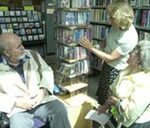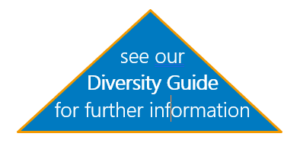
Many services that are run or commissioned by the Council focus on meeting the health and social care needs of disabled people, but disability equality goes beyond simply meeting these needs. The Equality Act 2010 encourages public authorities to advance equality for disabled people, including encouraging participation in public life. Disabled people make up around 15 to 20% of the population, but they are under-represented in employment and on boards/committees and experience many barriers to accessing services.
Our disability representative on the Equality Reference Group is Living Options Devon.
The social model of disability emphasises the individual and places the focus on removing barriers that get in the way of everyone being able to participate in all mainstream activities. The medical model of disability focuses on the impairment rather than the social barriers and many disabled people view it as negative. We work closely with many disabled people and groups to create a better environment for disabled people to prosper and enjoy life.

Our work on improving access for Deaf people
Devon has had a strong track record of supporting inclusion for Deaf British Sign Language (BSL) users, through Sign Vision consultation events and the development of a Devon BSL Charter. In 2014 the British Deaf Association (BDA) launched a new BSL Charter. The new national BDA Charter replaces the Devon Charter. We will use the BDA Charter to benchmark our progress in meeting the needs of Deaf people and encourage other organisations to do so.
- BDA British Sign Language Charter
- The story of Sign Vision consultation events and the development of the Devon BSL Charter
- The Devon BSL Charter
In 2017 we introduced video interpreting services in addition to face-to-face interpreting:
- Deaf people can contact hearing DCC staff and our Customer Service Centre using the Video Relay Service (VRS).
- Video Remote Interpreting offers our staff the ability to communicate with a Deaf person (who is with them) via a Sign Language Interpreter, who is available through a video link on a smartphone or PC. As long as there is good connectivity and lighting, staff can access this service from any location, through their PC or Windows phone using Skype for Business. For example, a receptionist can communicate with a Deaf person who has turned up at reception. It is only suitable for unplanned, short periods of interpreting.
- Staff can also contact a Deaf person via telephone when the Deaf person is not with them – they can phone an Interpreter who will contact the Deaf person by video link or leave a video message. The Deaf person needs to be registered on a database by DCC first.
- We also provide an e-learning course on Deaf Awareness to staff.
Further information on video interpreting for staff only.
End Pavement Parking campaign
Devon is currently raising awareness of the problems of parking on pavements. Find out more about our campaign and how you can get involved.
Access to the Countryside
The Devon Countryside Access Forum have published a Disability Access Position Statement (see Position Statements).
The Devon Countryside Access Forum recognises that everyone, whether residents or visitors, should be able to enjoy recreation in Devon’s natural environment.
The Position Statement sets out recommendations for improving access to the countryside for people with limited mobility, including on Public Rights of Way and cycle/multi-use trails, and points readers to more detailed information. Although the Statement focuses particularly on physical disabilities, it is worth noting that limited mobility affects a range of people, including parents with children in buggies; elderly or frail people, who might use an electric mobility scooter or wheelchair; and people with walking aids. Improving access for wheelchairs and large off road electric mobility scooters can improve access for all.
Ready When You Are
Thousands of people across Devon are overlooked for jobs because of pre-conceived myths and ideas about disability and long-term health conditions. Devon County Council has been trying to change this.
The ‘Be Ready’ Employer Hub service supports Devon-based businesses, charities and social enterprises to understand and build on the benefits of employing and keeping people with disabilities or long term health conditions.